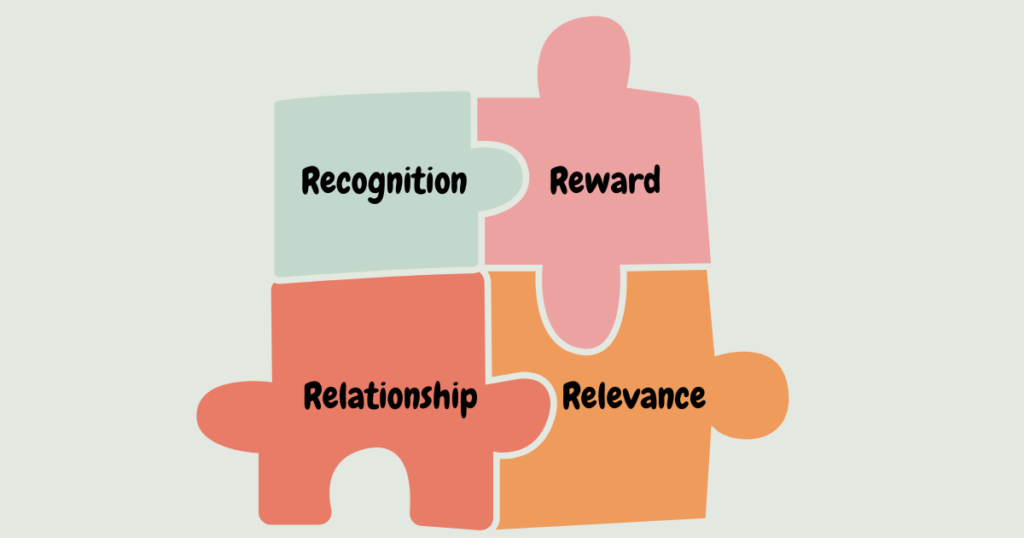Recently, I have been attending school to pursue my dream and passion of becoming a Digital marketing specialist. At college, I have one of the courses called Digital Media Marketing Seminar Series taught by Wendy Greenwood. This course is designed in a way where we have guest speakers each week and they provide insights on their experience working as a Digital marketer and what information or tools they work with daily and could be helpful to us. Last week, Wendy invited Lia Grimberg, Principal of Radicle Loyalty as a guest speaker. Lia’s insights into data usage, customer loyalty, and marketing personalization were thought-provoking. They left me reflecting on the role of data in building trust and loyalty between brands and consumers. Here are some key takeaways and reflections from the session.
Lia emphasized, “Data = Trust; Don’t lose the trust.” She explained that as consumers, we can tell when personalization is done right—and when it misses the mark. This notion made me think about my own experiences with personalized marketing.
I remember receiving an email from The Face Shop, the cosmetic brand I’d only shopped from once. They sent a personalized offer based on the exact products I’d previously purchased and included recommendations tailored to my skin type, which I’d filled out in a quiz months earlier. This made me feel seen and valued as a customer; it was almost as if the brand understood my needs without being intrusive. In contrast, I once had an unsettling experience where Amazon recommended items I’d merely browsed online, making me feel like I was being watched rather than helped. While personalization can enhance the shopping experience, it must be handled with care to avoid crossing into “creepy” territory.
Among the 4 Rs of Loyalty—Recognition, Reward, Relationship, and Relevance—Lia’s deep dive into Relevance particularly struck a chord with me. Before this class, I assumed that relevance in marketing was mainly about offering products that aligned with a customer’s past purchases or browsing behavior. However, Lia’s insights reshaped my understanding, highlighting that relevance goes beyond simple product recommendations; it’s about delivering the right message, at the right time, to the right person.
One example Lia shared was about brands leveraging real-time data to adjust their marketing communications dynamically. Instead of sending generic promotions, they tailor content based on current context—like weather, location, or even recent interactions with the brand. This kind of responsiveness showed me that relevance is a constantly moving target; it’s not just about knowing your customer but adapting to their needs in the moment.

My perspective shifted as I realized that relevance isn’t just a marketing tactic—it’s a commitment to understanding and valuing each customer’s unique journey. It’s about making every interaction feel personal and purposeful, ensuring that customers receive the value they need exactly when they need it. This approach builds deeper loyalty and trust, demonstrating that the brand truly understands its audience.
During the lecture, Lia Grimberg shared how modern customer loyalty programs leverage various data sources beyond traditional demographics and psychographics to identify and target customers more effectively. In our group’s case study, we tackled the challenge of optimizing a department store’s loyalty program by focusing on transactional and behavioral data instead of relying solely on basic demographic insights.
Our approach involved analyzing customer purchase patterns, including how frequently they shopped, whether they preferred online or in-store shopping, and their purchase history. By identifying these patterns, we aimed to create a personalized shopping experience by offering complementary products based on their previous purchases. For example, if a customer bought a beauty product, we might suggest a similar item when it’s likely running low or offer a complementary product to enhance their routine. We also incorporated time-sensitive offers, seasonal promotions, and discounts on future purchases as incentives to boost engagement.
The feedback from Lia was constructive and helped us reflect deeper on our strategy. She appreciated our approach to product suggestions and promotions but noted that our presentation lacked clarity regarding the specific audience we aimed to target. Lia pointed out that instead of broadly targeting all customers, we could have focused on a particular group, such as “one-and-done” customers—those who shopped only once and might need incentives to return. This insight helped us realize that while our data-driven approach was sound, it lacked specificity in defining and addressing a unique customer segment that would benefit most from our proposed strategy.
Her feedback was a valuable reminder of the importance of zeroing in on a clear target audience when designing loyalty programs. We learned that the power of data lies not just in gathering insights but also in using those insights to craft targeted strategies that address the needs of a well-defined customer segment. It was a great lesson in refining our approach and ensuring our strategies are both data-driven and sharply focused on the right audience.
Lia Grimberg’s statement, “Data is the new oil,” underscored the immense value of data in today’s marketing landscape. It made me reflect on my own skills in data literacy and storytelling—two critical components in turning raw data into actionable insights that drive customer loyalty.
I feel confident in my ability to interpret data and identify patterns that can inform marketing strategies. However, Lia’s discussion made me realize that data literacy goes beyond just understanding numbers; it’s about using those insights to craft compelling stories that resonate with customers on a personal level. This blend of analytical thinking and creative storytelling is what makes Customer Loyalty Marketing particularly appealing to me.
I’m drawn to the idea of using data to create personalized experiences that make customers feel seen and valued. The ability to transform data points into meaningful, relevant interactions that build trust, and long-term loyalty is both challenging and rewarding. It’s this combination of strategy, creativity, and the potential to make a tangible impact on how brands connect with their customers that excites me about a career in Customer Loyalty Marketing.
To conclude, Lia Grimberg’s lecture was a fascinating dive into the evolving landscape of customer loyalty and data-driven marketing. It challenged me to think critically about how brands use data and how I, as a future marketer, can help build trust and loyalty in every customer interaction.


